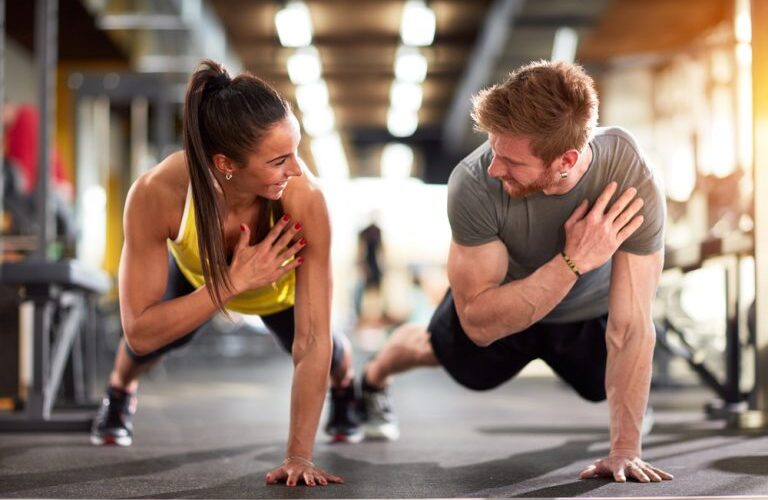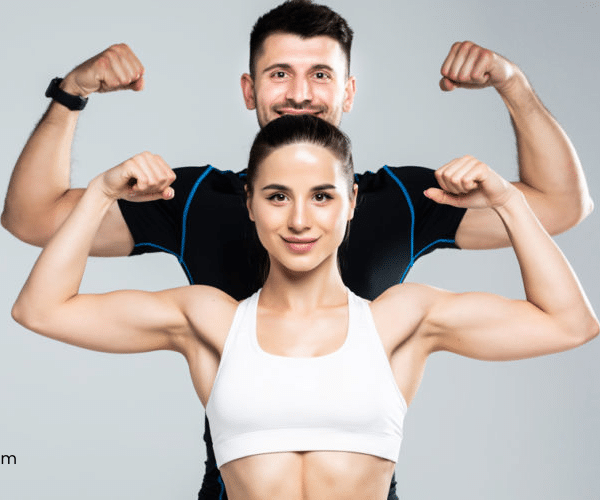There are many, many exercises to do at the gym today, but don’t forget the ones that built great bodies years ago! Use these 4 great fitness exercises from the past to perfect your physique today.
When it comes to building a body that stands out, sometimes it’s best to get back to basics. Just ask Annie Parker, IFBB bikini pro, who uses a lot of classic exercises :
Squats
Slots
Variants of ground lift
A little machine work for the details
But she also performs other moves that come straight out of the golden age of bodybuilding and she advises to do them as well: “The moves of classic bodybuilding are not just for guys,” Parker explains. “I incorporate a lot of classic moves into my workouts.
To help you get back to your roots, I offer old-school bodybuilding exercises that every woman should do.
T-bar à Ramer:
“T-bar row is a very classic move that is always great to include for back work,” Parker said. “There are a lot of variations of rowing and I would say it is potentially one of the most difficult exercises, that’s why I like it so much.
T-bar rows are more than just a movement to strengthen your back. Your arms, trunk and the back of your shoulders also come into action, especially when you load the bar.
Something nice about the T-bar is that this exercise allows you to work your lower back as well because of the diagonal working angle. “Not only do you have to lift the bar, but also all the weight you add,” says Parker.
If your back training is currently limited to pull-ups, she suggests you replace some of these exercises and switch. One interesting thing about this is that the movement can be done with 2 arms or 1 arm. Here are already two variations.
“Even with the end of the bar anchored in the ground, the correct form of performing the movement is always crucial here,” says Parker. For women, start with light weights and lots of repetitions that help build the V of the back, which can also help you feel your waist is getting thinner.
Squats with lots of rehearsals:
Few movements in the gym can burn as much as squats are done with lots of repetition, but if you really want to build a strong and firm lower body, you have to go through this type of movement.
“Who doesn’t like squatting,” Parker exclaims. “Squats work on both the legs and buttocks, which is what every woman wants. And they don’t need to follow the sometimes absurd rule of three sets of 10 to 15 repetitions.”
Of course, squatting at the beginning of a workout is a great way to build strength and muscle, but Annie Parker likes them just as much as a leg day finish. When she does them this way, she uses a box or flat bench to make sure she goes down low enough, since it’s at this lower segment that the buttocks are really targeted. She then increases the number of repetitions.
“Because it’s a complete leg exercise, I often do 4 to 5 sets of 20 reps,” she says. “Believe me, you’re going to have a good gluteal congestion after you’re done!”
When you are squatting with a lot of repetition, she recommends paying special attention to your breathing. Creating intra-abdominal pressure by holding your breath will help you find the strength to finish the number of repetitions. But don’t hold your breath for the whole set! Breathe shallowly but strongly and continue your exercise.
Decline Cable Crunch:
“Cable pullovers or pullover-downs are great all over the upper body and back. …] I like to do a superset of 20 repetitions of pullover-down with arms outstretched (facing the pulley in a high position, slightly bent forward, it looks like a triceps exercise, but her arms outstretched), which targets the back well, with 20 triceps extensions to the pulley (a classic triceps exercise) to complete the upper body,” Parker explains.
When it comes to performing classic strength training movements for the triceps and upper back, the mental-muscle connection is key. Too many people load the bar and do the exercise too fast. Before you know it, they’re moving their arms up and down and who knows which muscle they’re working? Instead, it’s better to work slowly and lighter and focus on the muscle contraction of the lateral back muscles that guide the movement. Not quite sure you’re working the right muscles? Try filming yourself or having someone film you while you do the move and compare it to Annie’s videos. Or ask for help from a sports coach at your gym. It can be difficult to know for sure how you do these 2 exercises. Video footage can really help.
Posing and flexing:
Most people who do not compete do not consider posing (posing) and flexing (flexing) as part of a workout. They may even find it ridiculous!
But in the old days of bodybuilding, these techniques were crucial in many muscle strengthening regimes. And if you think it’s only useful for those who compete, think again! It can help you create and feel the mind-muscle connections, especially when your muscles are tired towards the end of a workout, and help you maintain a clean execution of the movement and then maximize your results.
“Of course, if you are a competitor, posing after your workout should be considered a total part of your workout. The way you present your body on stage is just as important as your body itself,” says Parker. You’ve worked so hard to build your physique. The last thing you want is to lose a contest because you haven’t spent enough time showcasing those muscles properly.
Even if you’re not competing, you can still get great benefits from a flexing session. Never be ashamed! “Even if you are not a competitor, don’t be afraid to voluntarily contract your muscles by looking at them in the mirror while they are congested. It’s a great way to give them one last shot of intensity,” says Parker.
Does it feel weird at first? It might. But it will get easier every time. And remember that what you’re doing has worked wonders for many successful athletes before you. Do it right and it will pay off for you.



